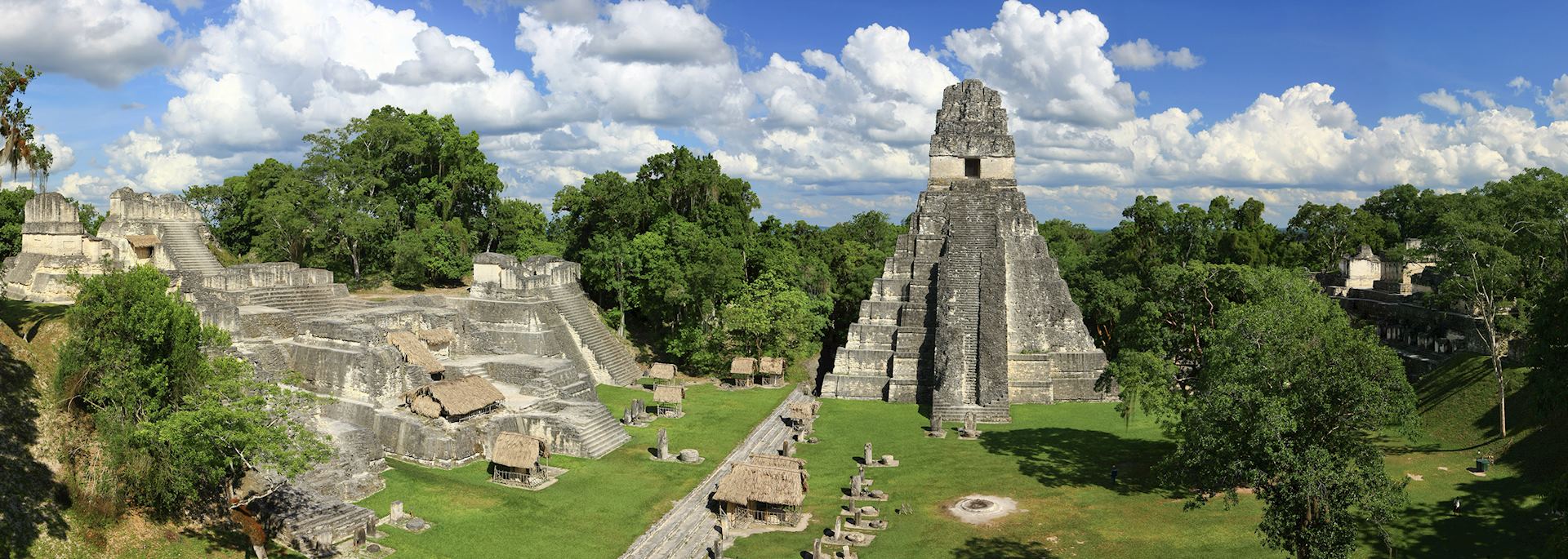Tikal is most definitely the most impressive of all the Mayan sites in Central America, not only for its historical remains but because it is also a haven for wildlife, making the trip to Tikal all the more enchanting.
The whole area around Tikal is protected so there are hundreds of species to be found. The ruins lie within the 576 square kilometer Tikal National Park, declared a World Heritage Site in 1979. Among the 54 species of mammals in the park, the spider monkeys and pizotes (coatimundi) are the easiest to see.
The site's mapped district covers 16 square kilometers and comprises more than 3,000 individual structures, temples, and courtyard groups. The city flourished during the classic and late classic periods (300 to 900 AD). Many of the massive buildings that are visible today were constructed during this time. The monuments paid tribute to the rulers of the past and were meant to please the deities. In addition to their obvious achievements in construction the Maya also excelled in the arts, astronomy and glyphic writing.
At its peak some 1,500 years ago, Tikal was home to an estimated 100,000 Maya and it was one of the more important urban centers of its time. This is evident in the more than 3,000 structures extending over six square miles. There is little to beat the magical experience of tramping through the hot and sticky jungle, especially in the early morning mist. You are surrounded by the eerie roar of nearby howler monkeys and the call of tropical birds, approaching temples that tower above you as they rise straight from the forest floor through the tree canopy.
There are five main protruding temples, that rise over 60 meters, making up Tikal, which the fit and brave can climb (at your own risk) for magnificent views, as well as thousands more remaining structures among them some still hidden under mounds of earth, awaiting discovery.
who's been there
- 617-223-4990
- Make an inquiry

